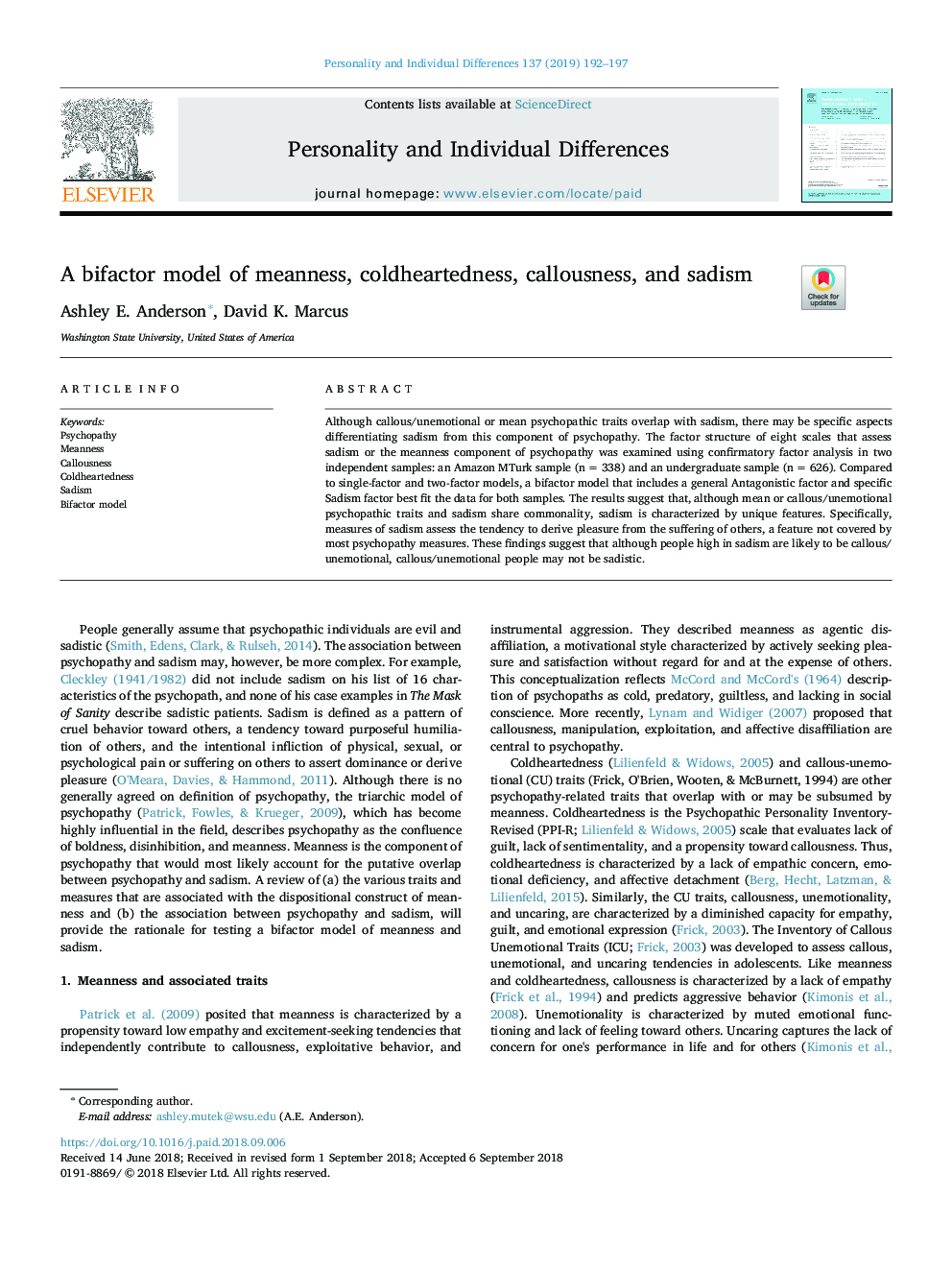| Article ID | Journal | Published Year | Pages | File Type |
|---|---|---|---|---|
| 11004405 | Personality and Individual Differences | 2019 | 6 Pages |
Abstract
Although callous/unemotional or mean psychopathic traits overlap with sadism, there may be specific aspects differentiating sadism from this component of psychopathy. The factor structure of eight scales that assess sadism or the meanness component of psychopathy was examined using confirmatory factor analysis in two independent samples: an Amazon MTurk sample (nâ¯=â¯338) and an undergraduate sample (nâ¯=â¯626). Compared to single-factor and two-factor models, a bifactor model that includes a general Antagonistic factor and specific Sadism factor best fit the data for both samples. The results suggest that, although mean or callous/unemotional psychopathic traits and sadism share commonality, sadism is characterized by unique features. Specifically, measures of sadism assess the tendency to derive pleasure from the suffering of others, a feature not covered by most psychopathy measures. These findings suggest that although people high in sadism are likely to be callous/unemotional, callous/unemotional people may not be sadistic.
Related Topics
Life Sciences
Neuroscience
Behavioral Neuroscience
Authors
Ashley E. Anderson, David K. Marcus,
